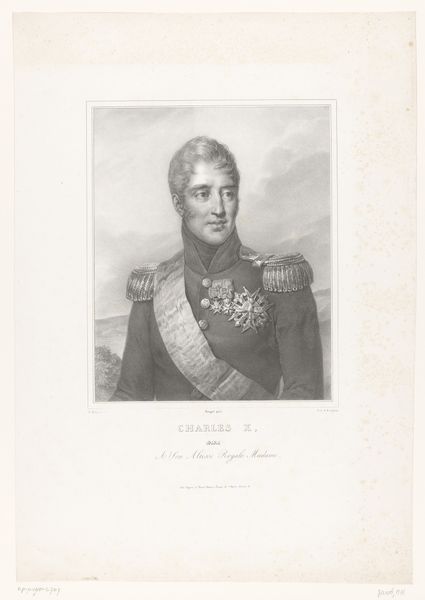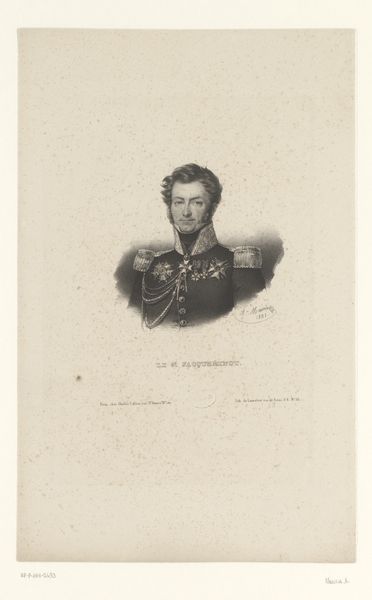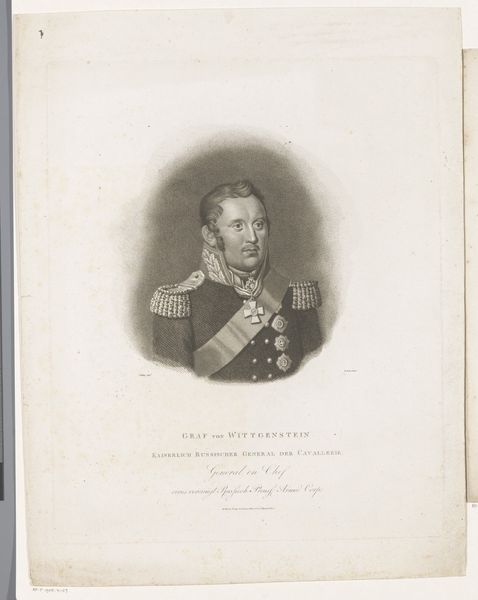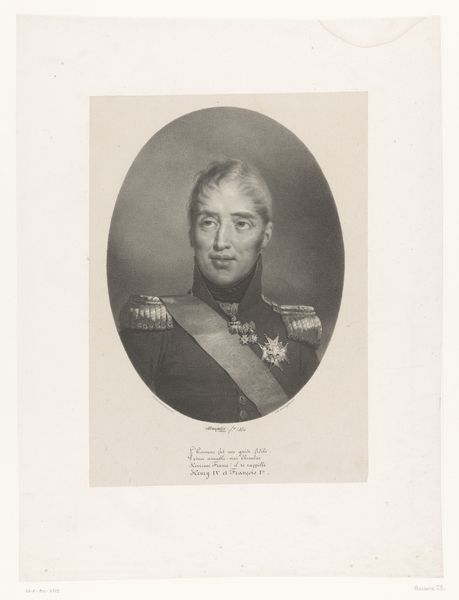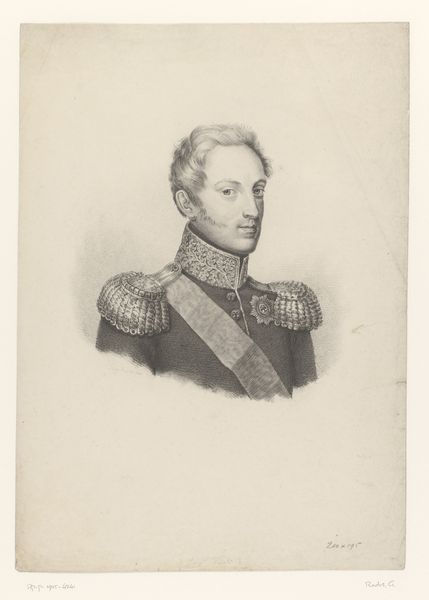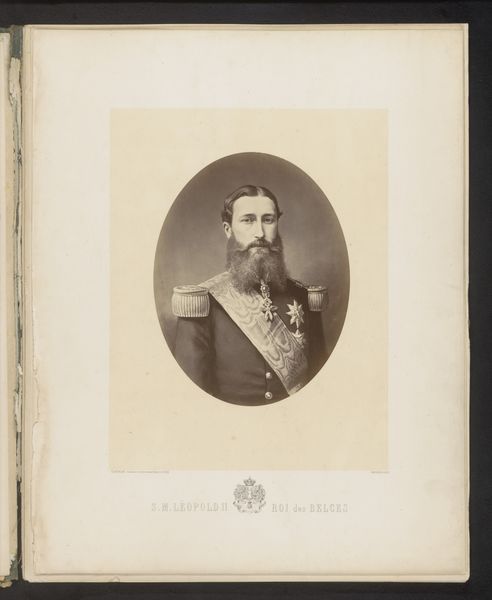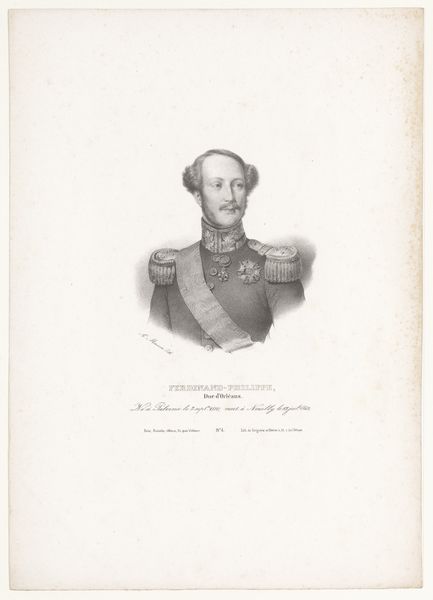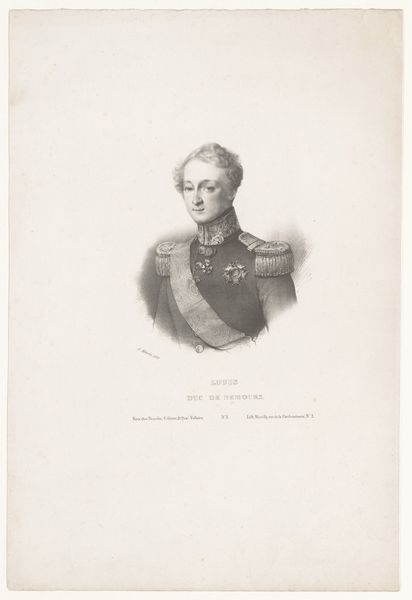
print, engraving
#
portrait
#
neoclacissism
# print
#
history-painting
#
engraving
#
realism
Dimensions: height 292 mm, width 243 mm
Copyright: Rijks Museum: Open Domain
Editor: This is a portrait of King Ludwig I of Bavaria, created between 1825 and 1827 by Pierre Roch Vigneron. It's an engraving. The level of detail Vigneron achieved with this printmaking technique is impressive. What can you tell me about this piece? Curator: Considering the period and Ludwig's role, it’s essential to see this portrait not just as an image but as a crafted object participating in the construction of power. Look closely at the engraving process. The deliberate act of creating these lines and textures—that repetitive labor—was a way of translating royal authority into a reproducible and distributable form. Editor: So, the choice of engraving itself becomes significant? Curator: Precisely. Engraving allowed for mass production, which meant the image of the King, along with his implied power, could be disseminated widely. This speaks to how images helped establish political presence through accessible material culture. Consider the cost and time invested versus other forms of portraiture. Who had access to this image? Where would you expect it to circulate? Editor: Maybe amongst other nobles, government officials…almost like propaganda? Curator: Indeed. We need to also think about the engraver themselves – what was Vigneron's position within the court? And how might his labor relate to other forms of craftsmanship in 19th-century Bavaria? Think about class, and the economy around making and selling the work, to understand the purpose of this piece beyond a likeness. Editor: That makes me consider this as a carefully constructed object of power, manufactured through a specific process to reach a particular audience and to control his image. Curator: Exactly. The artwork becomes more than just art, but material evidence of historical forces and power structures.
Comments
No comments
Be the first to comment and join the conversation on the ultimate creative platform.

